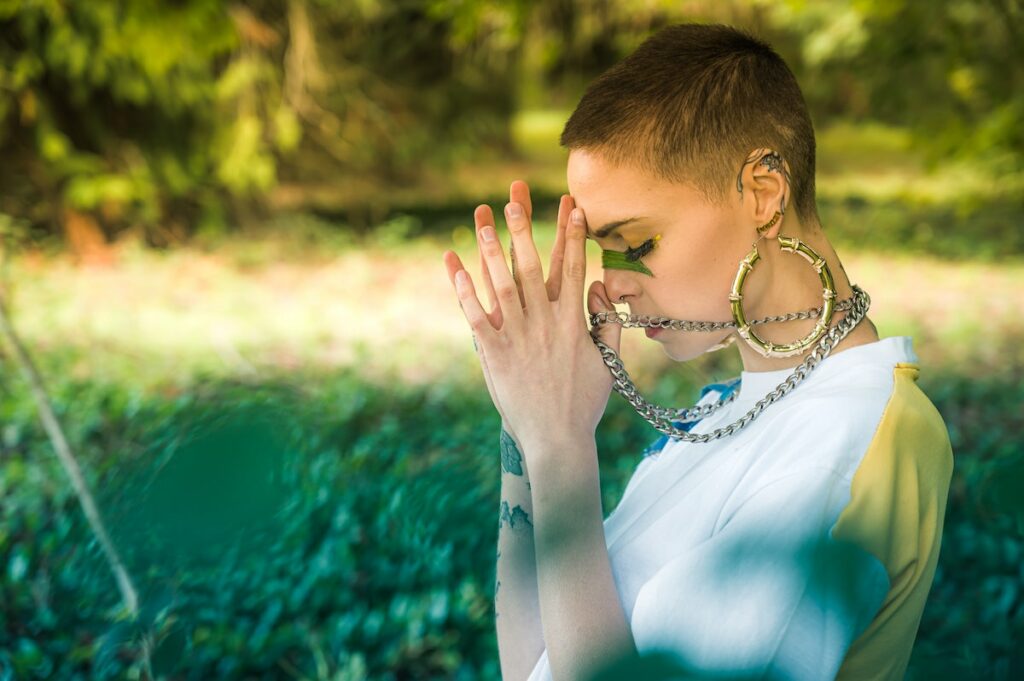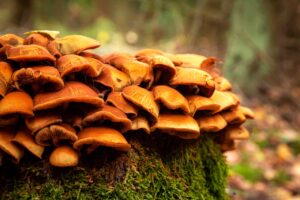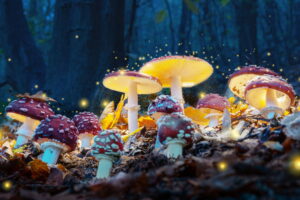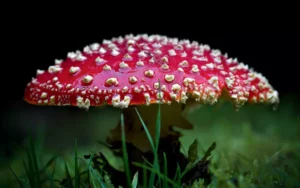Psychedelic mushrooms, often known as magic mushrooms, have been used by humans for thousands of years in various cultural, spiritual, and medicinal contexts. From ancient shamans channeling extraterrestrial wisdom to contemporary researchers investigating their therapeutic potential, these mysterious mushrooms have captivated the imagination of countless generations.
This in-depth investigation delves into the intriguing history of Magic Mushrooms, from their use in ancient rituals to the controversy surrounding them, from the birth of the novel idea of microdosing to their profound spiritual and medicinal significance. We’ll also go on a one-of-a-kind hunt for the Liberty Cap fungus, one of the first magic mushrooms ever discovered.
This article offers a complete account of the ancient history of magic mushrooms, covering more than 9,000 years of human connection with this unique fungus, concentrating on the historical and cultural elements.
Ancient History of Magic Mushrooms
The narrative of where and how magic mushrooms first appeared in human history goes deep into the archives of our species and so do the controversies linked to them. For thousands of years, these magical mushrooms have been an integral component of human culture and spirituality, leaving behind evidence of their usage in various contexts. Here, we’ll explore the fascinating and varied past of magic mushrooms.
Origins in the Past
The use of what we now call “magic mushrooms” has been traced back to ancient times. Some of the oldest pictures of mushrooms date back to between 7,000 and 9,000 years ago, and they were discovered in cave paintings in North Africa, notably in Algeria. The use of magic mushrooms in rituals and art by our ancient forebears is hinted at by these paintings. Archaeologists and anthropologists continue to be fascinated by and argue about the importance of these mushrooms in ancient societies.
Original Societies
Throughout history, indigenous communities worldwide have included magic mushrooms in their ceremonies and rituals. These mushrooms have been held in high regard by indigenous communities throughout the Americas, from the Mazatec in Mexico to those in Central and South America. Curanderos and ayahuasqueros, indigenous shamans, have traditionally utilized Psilocybe cubensis mushrooms in rituals to make contact with the afterlife, obtain wisdom, and aid in healing the body and mind.
References and Ancient Writings
Indirect allusions to the usage of hallucinogenic mushrooms may be found in several ancient books and manuscripts from a variety of civilizations. For example, some scholars think that lines in the “Rigveda,” the ancient scripture of Hinduism, describe the effects of a psychedelic chemical, presumably the Amanita muscaria mushroom. These citations suggest that magic mushrooms were possibly used in ancient Indian spiritual and religious ceremonies.
Ethnobotany in Europe
Magic mushroom usage has been documented for quite some time, most of it in the Americas. However, there is also evidence of use in Europe. According to ethnobotanical research and historical reports, some European societies were aware of mushrooms’ hallucinogenic effects. The Amanita muscaria mushroom, for instance, was reportedly used in ceremonies by Siberian shamans.
Symbols and Rituals
Psychedelic or “magic mushrooms” have a long history of symbolic and religious use. They were sometimes used as a channel to the afterlife or divine beings. Ancient art, architecture, and religious items often have mushroom symbolism. For instance, the mystical value of mushrooms was highlighted in the artwork of the Aztecs and Maya of Mesoamerica.
Negative Interactions Across Cultures
A turning point in the history of magic mushrooms occurred with the advent of European invaders in the Americas. These settlers often disapproved of native mushroom rites and attempted to replace them with Christian practices. This led to cultural tensions and the demonization of magic mushrooms, which had been used in many indigenous rituals.
Controversies Linked to Magic Mushrooms
There has always been debate and legislation around “magic mushrooms.” Some of the controversies linked to psilocybin mushrooms are listed here.
When European invaders arrived in the Americas, they ended native ceremonies using mushrooms. Cultural tensions and the demonization of magic mushrooms arose because missionaries regarded these rituals as paganism and wanted to replace them with Christianity.
The possession and consumption of magic mushrooms became illegal in numerous nations in the 20th century. Psilocybin was placed under Schedule I of the Controlled Substances Act in 1970, making its possession and use unlawful in the United States.
Psilocybin’s medicinal potential has been studied despite legislative limits on medical research. Because of this, discussions concerning using magic mushrooms in medicine and therapy have heated up.
The Emergence of Microdosing
Microdosing has become more commonplace in recent years. Microdosing is the practice of using a small quantity of a psychedelic drug, such as psilocybin, to reap the drug’s subtle mental and emotional advantages without experiencing the severe hallucinations common at greater dosages.
Here’s the backstory on how and why the concept of microdosing came into pictured:
- After taking a microdose of magic mushrooms, positive effects on mental health have been recorded. These anecdotal accounts inspired an interest in investigating the possible advantages of microdosing for mental health.
- Microdosing produces milder effects when a person takes a dosage that is one-tenth to one-twentieth of a recreational dose. The favorable impacts this has are frequently characterized as an improved mood and enhanced output.
- Microdosing has gained popularity, and experts have begun studying its effects. While scientific proof is still lacking, the idea has gained traction in the tech and creative circles among those looking for ways to improve their brainpower.
Also read : How to microdose magic mushrooms
Mushrooms for Spiritual and Medicinal Purposes
Throughout history, magic mushrooms have been essential in many religions and philosophies.

Mushrooms for spiritual and medicinal purposes they have both religious and therapeutic uses.
- Magic mushrooms are often utilized in indigenous cultures in shamanic ceremonies to facilitate spiritual journeys and establish a connection with the divine. One may learn from them, get well, and reconnect with nature simultaneously.
- In the present day, some certain people and communities use magic mushrooms as part of their religious or spiritual rituals. The Native American Church, for instance, bases its beliefs and rituals on using magic mushrooms.
- Magic mushrooms have been the subject of recent studies because of their apparent medicinal potential. Depression, anxiety, and post-traumatic stress disorder (PTSD) are among the diseases for which therapy studies have shown encouraging outcomes. Psilocybin-assisted therapy is being researched as a potential new method for dealing with mental health issues.
Local Liberty Cap Mushrooms: One of the Oldest Magic Mushrooms
The local Liberty Cap mushrooms is one of the oldest known species of magic mushrooms, having a history steeped in human culture and spirituality—Psilocybe semilanceata, is a fungus so extraordinary that it has captured the imagination of humans for millennia.
Locations Around the World
The Liberty Cap mushroom is well-known for being found all over the world. Its widespread distribution makes it available to people of many ethnicities and socioeconomic backgrounds. Precisely, it does well in the temperate climates of Europe, North America, and certain areas of Asia. Meadows, pastures, and even the sides of highways are prime locations to find these mushrooms.
Aeons ago
The fascinating history of the Liberty Cap mushroom’s human usage is one of its most oldest magic mushroom features. Historical documents and archaeological excavations point to a long history of using these mushrooms for their hallucinogenic effects. Ancient European rites and behaviors are illuminated by the discovery of objects and representations of Liberty Caps across Europe. These results suggest that the Liberty Cap mushroom may have been significant in ancient Europeans’ religious and cultural life.
Effects on the Mind
The chemical psilocybin is primarily responsible for the hallucinogenic effects of the Liberty Cap mushroom. Psilocybin, once eaten, is metabolized into psilocin, which then interacts with serotonin receptors in the brain, causing one to undergo significant mental and spiritual changes. As a result of these properties, the Liberty Cap mushroom has been widely used by shamans, spiritual leaders, and people interested in expanding their horizons of consciousness.
Status in the Law
Liberty’s place in the law The shape and size of cap mushrooms vary from nation to country. Due to their psychotropic effects, they are deemed illegal in certain areas while remaining primarily unregulated in others. The continual controversy and cultural and historical difficulties surrounding the use of psychedelic compounds are reflected in the wide range of legal treatment they get across the world.
Conclusion
Many different threads make up the rich tapestry that is the history of psilocybin mushrooms. Magic mushrooms continue to pique people’s interest and provide valuable insights into the human mind for various reasons, from their role in traditional rituals to their possible medicinal uses.
Magic mushrooms may play an increasingly significant role in spirituality, mental health, and human awareness as research into their advantages increases, and legal views alter. The incredible journey of these fascinating mushrooms through human history is just beginning.

Hi! I’m Jacob Hawthorne, a passionate medical student dedicated to exploring the fascinating world of psychedelics, particularly magic mushrooms (commonly known as shrooms). With a deep interest in their therapeutic potential and profound effects on the human mind, I aim to provide accurate and evidence-based information about shrooms in the Canadian context.




